Brompton Cemetery is a Victorian era cemetery in South West London. Despite the absence of famous names, the cemetery is one of the most interesting in the city, full of beautiful tombstones and memorials. It is one of the seven so-called magnificent cemeteries. Of these seven large garden cemeteries, Brompton Cemetery is located the closest to the city center.
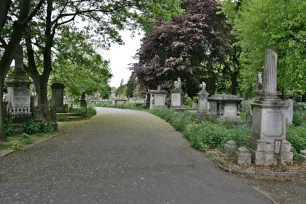
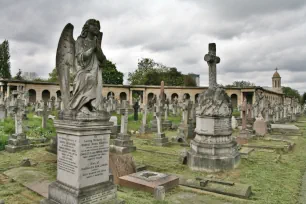
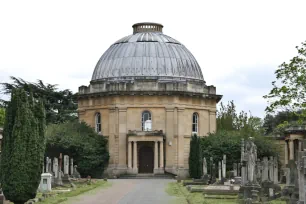
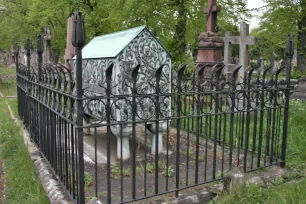
The 16.5 hectare (41 acre) large cemetery feels more like a park strewn with sculpture, and local residents often come here for a walk or use it as a shortcut between Earl’s Court and Chelsea. The cemetery also boasts an unusual abundance of faun and flora.
History
In the nineteenth century London’s population boomed, and sanitary conditions were often appalling, which resulted in the frequent outbreak of diseases. One of the remedies proposed was the abolition of intramural burials and the creation of large cemeteries outside the city center. Brompton Cemetery, at the time known as the West of London and Westminster Cemetery, was one of the first of such cemeteries.
It was established by the West London and Westminster Cemetery Company, which envisioned a grand cemetery with magnificent monuments. In 1838, they organized a competition for a design of the cemetery, which was won by Benjamin Baud. His plan included a formal layout with a wide central avenue and several large buildings, several of which were unfortunately never built due to financial difficulties encountered by the cemetery company.
The cemetery opened in 1840. In 1850 a law was passed that allowed the government to nationalize the cemeteries. By the time the law was repealed in 1852, only Brompton Cemetery had been acquired. Today, it is still the only public cemetery under government control.
Cemetery Design
The cemetery is laid out in the vein of a formal French garden, with a central axis and rectangular sections arranged like parterres around round points.
The focal point of Brompton Cemetery is the octagonal, domed chapel, which is said to have been modeled after the St. Peter’s Basilica in Rome. And the catacombs and Grand Circle in front of the chapel are reminiscent of St. Peter’s Square. Another remarkable feature of the cemetery is its grand entrance, built in the shape of a triumphal arch.
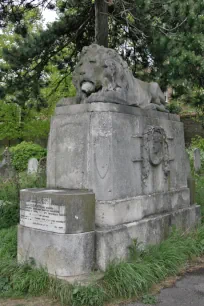
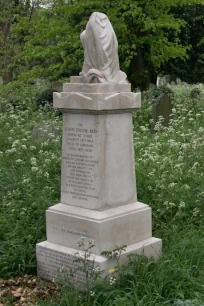
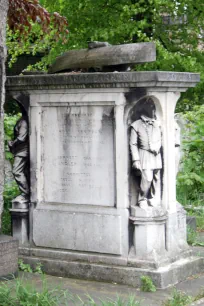
Tombs and Graves
More than 200,000 people are interred here, and the cemetery contains more than 30,000 monuments. Unfortunately, many monuments are in need of a renovation and too many of them have been vandalized. Nonetheless, there are still plenty of interesting tombs to see and the crumbling sculptures and buildings certainly have a certain charm.
The most impressive monuments in the cemetery are located in the north section near the central avenue, but the Grand Circle in the southern half, with its forest of crosses, many of them of Celtic design, is just as fascinating.
Some of the monuments to look out for include the tomb of the celebrated boxer John “Gentleman” Jackson, on which rests a huge statue of a resting lion. Another large tomb is that of Frederick Leyland, a shipowner. His tomb was designed by Edward Burne-Jones and resembles a medieval shrine, beautifully wrapped in a wrought iron grille of wild lilies.
The monument to world champion sculler Robert Coombes shows a boat on its head with broken sculls. At each corner of the monument stand the figures of four champion rowers.
Other names to look include suffragette Emmeline Pankhurst; John Snow, a physician who discovered the link between contaminated water and Cholera; Henry “Gus” Mears, founder of the Chelsea Football Club (their home ground, Stamford Bridge, is right near the cemetery); Fanny Brawne, the fiancée of John Keats; Reginald Warneford, the first pilot to shoot down a zeppelin; and Samuel Sotheby, an auctioneer and antiquary.
There are also many soldiers buried in the cemetery. There is even a separate section in the cemetery with only military graves. At its center is a large white cross honoring the Brigade of Guards. Another memorial, a large obelisk, honors the more than 2500 pensioners from the Royal Hospital Chelsea (a retirement and nursing home for soldiers) who were buried here.
- Next: Somerset House
- More Sights & Attractions in London

